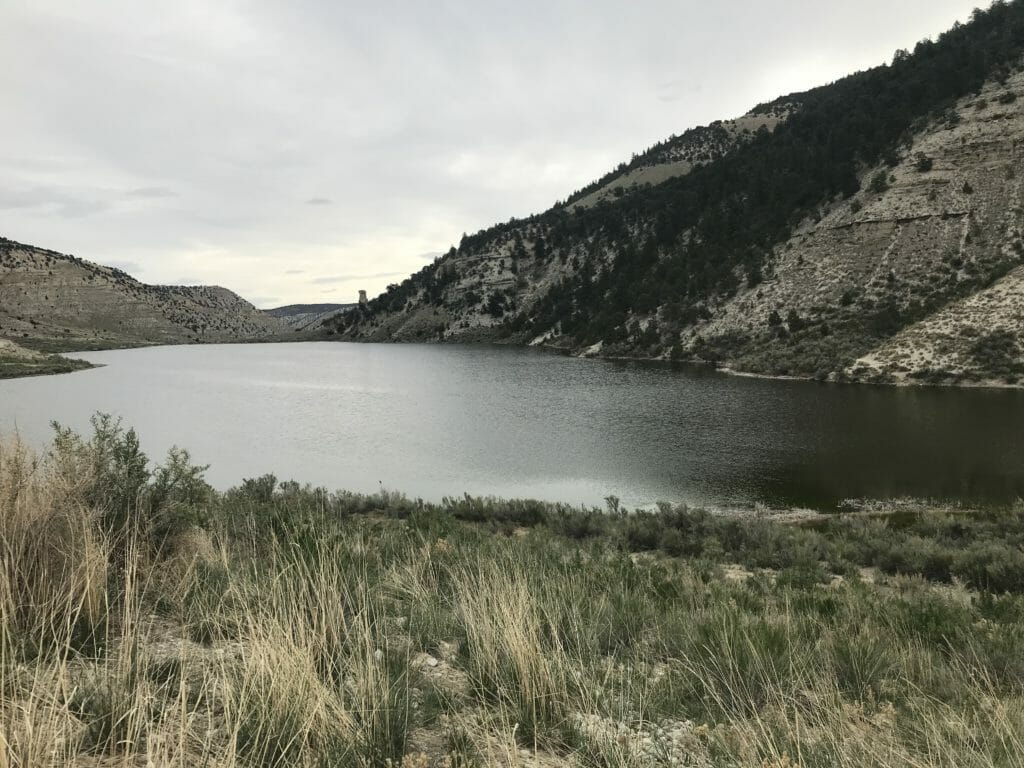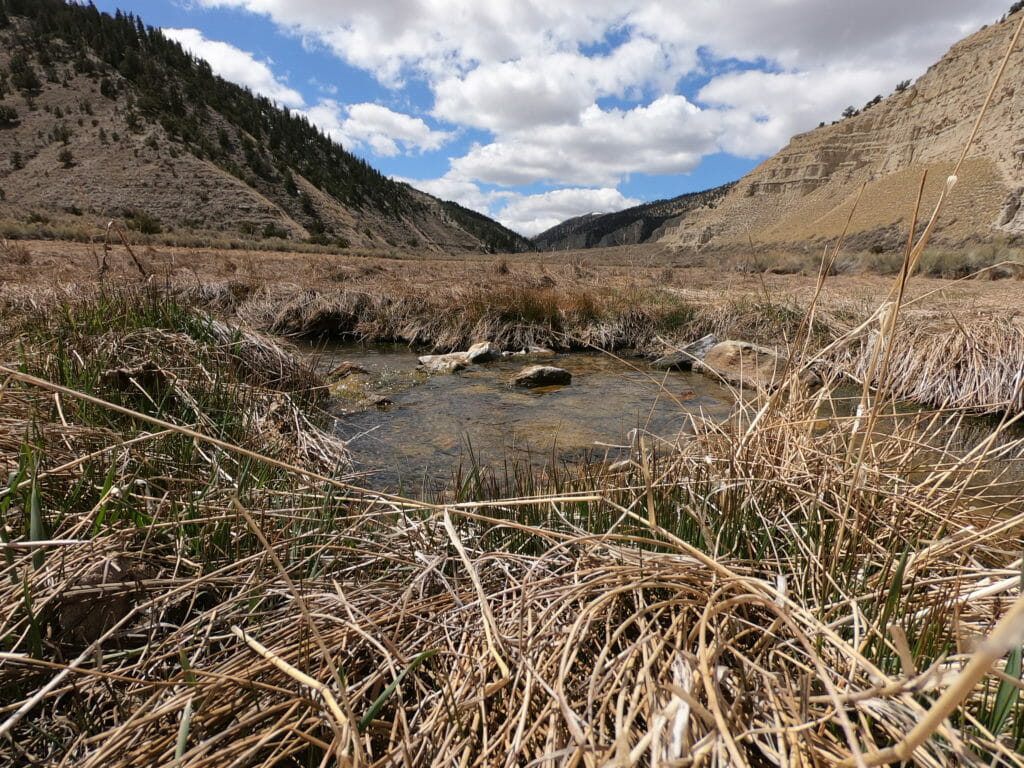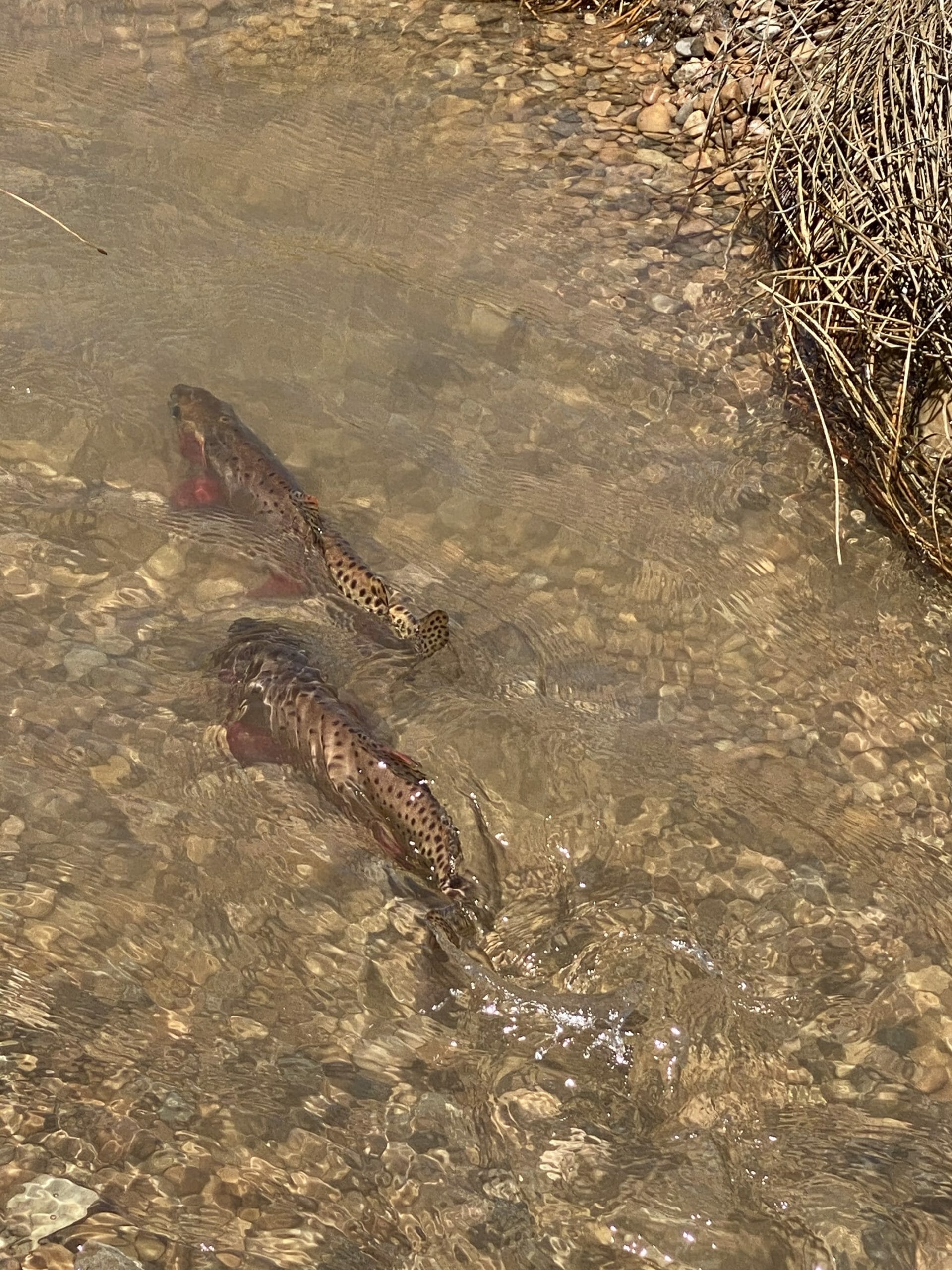By Mike Fiorelli
It often takes years for the results of conservation work to be recognized, but sometimes it happens during the process. Such was the case on a recent project Trout Unlimited was working on with the Utah Division of Wildlife Resources in northeastern Utah.
The Lake Canyon drainage is home and native range of the North Tavaputs brood stock of Colorado River cutthroat trout. The drainage consists of approximately 3 miles of stream terminating in a lake.
“The population in the stream is a self-sustaining conservation population helping to ensure the future of this species,” said Bryan Engelbert, a native cutthroat trout biologist for the northeastern region of the Utah Division of Wildlife Resources. “This work is important as the stream provides genetic diversity to the brood that is housed in the lake through fish moving between the two habitats.”

The lake, and area around the lake were acquired by the Utah Division of Wildlife Resources in 2001. The stream had previously been used primarily for irrigation and had been straightened. Critical habitat characteristics like spawning gravel, undercut banks and riffles were lost in that process.
There have been several efforts to improve conditions in the stream and all have proved beneficial. In this latest case the results were immediate.
I worked with the Division of Wildlife Resources over several weeks this spring on the stream above Lake Canyon. We moved rock, dug holes for willows and built fish hotels, among other things.
My favorite part was building riffles and spawning habitat. The fish seemed to like it as well. One day we finished building a riffle and left the area to have some lunch. Upon our return less than an hour later we came back and were surprised to find three cutthroat in the spawning gravel we had just placed starting to build a redd. Our hard work paid off literally before our eyes. We gave the fish a wide berth. It felt great to know our work will help ensure the North Tavaputs Colorado River cutthroat trout brood will survive and, hopefully, thrive well into the future.

The first project on the stream was in started in 2006 and was designed to improve habitat conditions by redesigning the channel. What once resembled a ditch took on the characteristics of a classic meandering meadow stream.
A second phase of the project occurred from 2014 to 2016. This phase included willow plantings, wildlife exclosures, and riffle construction. Additionally, fish hotels were constructed to provide overhead cover by embedding logs into outside bends of the stream.
Efforts on the stream proved invaluable in the coming years. The 2018 water year was not kind to the Lake Canyon drainage and the lake itself reached critically low levels in the fall.
The winter of 2018/2019 was prolonged and resulted in an approximately 85 percent loss of cutthroat trout due to a lack of oxygen in the lake. Following the die-off, state biologists came to realize how critical their previous work had been when they found numbers of fish had survived the harsh winter in the stream above the lake.
Without the work that had occurred previously, the North Tavaputs brood of Colorado River cutthroat trout would be in question. Fish that survived that winter in the river started to move back into the lake, and with additional stocking, population levels of the brood stock were sufficient to achieve conservation goals.
Fisheries biologists realized there were additional opportunities for the improvement of habitat conditions on the stream and initiated a third phase of work. This plan called for adding additional depth to the stream channel, upgrading and installing new fish hotels, and adding new riffle spawning habitat.
With this most recent project completed we will continue to watch the fishery for any new threats. In the meantime, it was sure nice of the fish to let us know our hard work was not going for naught.
Mike Fiorelli is the Uintah Basin Project Manager for Trout Unlimited. He is based out of Vernal, Utah. Utah Division of Wildlife Resources and Trout Unlimited staffers practiced Covid-19 safety measures while completing conservation work at Lake Canyon.



